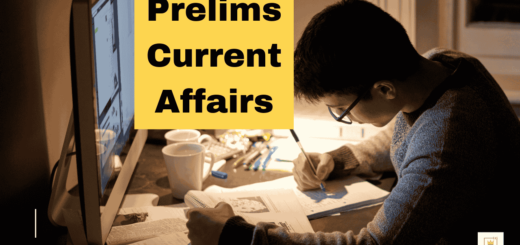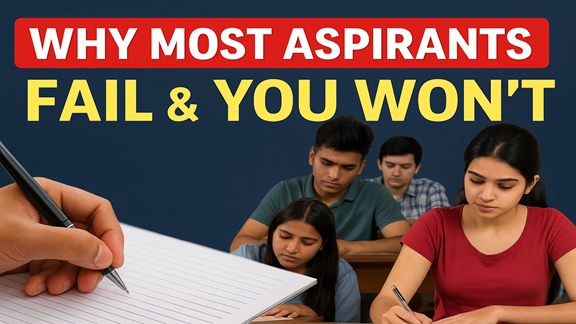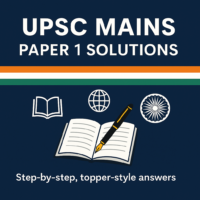Current Affairs for UPSC PSC + MCQ (9 October, 2024)
Current Affairs for UPSC PSC + MCQ (9 October, 2024)
What is Marburg Virus, Which Has Rocked Rwanda”
Introduction
- The Marburg virus is one of the deadliest pathogens known to infect humans, causing a severe hemorrhagic fever.
- Recent outbreak in Rwanda has strained the country’s healthcare system with 46 reported cases and 12 deaths.
Impact on Rwanda’s Healthcare System
- Around 80% of infections involve medical workers.
- Rwanda has only 1,500 doctors for a population of over 13 million, making the outbreak particularly challenging to manage.
What is the Marburg Virus?
- Belongs to the Filovirus family, similar to Ebola.
- First outbreak recorded in 1967 in Marburg, Germany.
- Past outbreaks have been mainly in Africa.
- Case fatality rates range from 24% to 88%, depending on virus strain and treatment.
How Does MVD Spread?
- Initially transmitted through prolonged exposure to mines or caves inhabited by Rousettus bats, especially the Egyptian fruit bat.
- Can spread through human-to-human contact:
- Direct: Contact with blood or bodily fluids.
- Indirect: Contact with contaminated surfaces or materials like bedding or clothing.
- Medical workers are highly susceptible in outbreaks, especially where infection control measures are inadequate.
Symptoms of MVD
- Incubation period: 2 to 21 days.
- Initial symptoms include:
- High fever, severe headache, muscle ache.
- Severe watery diarrhea, abdominal pain, cramping, and vomiting.
- Haemorrhagic symptoms develop in many cases, leading to bleeding from multiple sites (e.g., digestive system, nose, gums).
- Fatal cases usually result from severe blood loss and shock, with death occurring 8 to 9 days after symptom onset.
Prevention and Treatment of MVD
- No approved vaccines or specific treatments are currently available.
- Supportive care (rehydration and treatment of symptoms) can improve survival rates.
- Experimental vaccines and treatments are being explored:
- Rwanda is using experimental vaccines from the US-based Sabin Vaccine Institute, which has provided 700 doses for frontline healthcare workers.
Conclusion
- Rwanda is facing a significant challenge with the Marburg virus outbreak, particularly due to its impact on the healthcare system and the lack of approved treatments. Experimental vaccines may provide some hope in controlling the spread.
“Nobel Prize in Physics 2024: Contributions of John Hopfield and Geoffrey Hinton to AI”
Introduction
- The 2024 Nobel Prize in Physics has been awarded to John Hopfield and Geoffrey Hinton.
- John Hopfield is an American scientist known for his work in biological physics, while Geoffrey Hinton, often called the ‘godfather of AI’, is British-Canadian.
- Their research laid the groundwork for modern machine learning and artificial intelligence (AI).
How Does AI Mimic the Brain?
- The human brain processes information through perception, memory, and learning.
- AI mimics this by replicating memory and learning functions in machines, though it cannot yet think like humans.
- AI systems can analyze patterns, like identifying cancer cells from images, a skill developed through decades of research.
John Hopfield’s Contributions
- Developed the concept of associative memory, where specific inputs can trigger related memories, similar to how a familiar scent can evoke memories.
- Created the “Hopfield network,” an artificial network of nodes that stores and reconstructs information.
- This network could identify and restore incomplete or distorted patterns based on stored data, mimicking memory processes in the brain.
- The initial version was built in the 1980s, with continuous improvements over time.
Geoffrey Hinton’s Contributions
- Expanded on the Hopfield network using concepts from statistical physics.
- Developed the Boltzmann machine, named after physicist Ludwig Boltzmann.
- Unlike traditional learning models, the Boltzmann machine learns from examples rather than direct instructions.
- It can recognize new patterns or examples by identifying similarities to categories in its training data, similar to recognizing a family resemblance between people.
Concerns Around AI
- Geoffrey Hinton has previously expressed concerns about AI’s potential risks:
- Worried about AI-generated content, such as fake photos, videos, and text, making it difficult to distinguish truth online.
- Raised concerns about AI’s impact on job displacement.
- The Nobel Prize press release also emphasized the dual nature of AI as a powerful tool whose impact depends on responsible human use.
Conclusion
- Hopfield and Hinton’s pioneering work has significantly advanced AI, providing key concepts like associative memory and neural network learning.
- The future use of deep learning and AI remains contingent on how society manages these powerful technologies.
“Maldives President Muizzu Meets PM Modi: Focus on Easing Fiscal Burden and Bilateral Relations”
Introduction
- Maldives President Mohamed Muizzu meets Indian Prime Minister Narendra Modi during his first bilateral State visit to India.
- Muizzu emphasizes the need for India’s support in addressing the Maldives’ fiscal challenges.
- The visit marks a significant moment as bilateral ties have been tense since Muizzu’s rise to power on an ‘India Out’ platform.
Key Highlights of the Visit
- Muizzu arrived in New Delhi for a five-day visit (October 6-10) and was received by India’s Minister of State for External Affairs.
- During the visit, he will meet with Indian leaders, including President Droupadi Murmu, and visit Agra, Mumbai, and Bengaluru.
- External Affairs Minister S. Jaishankar met with Muizzu, expressing optimism about enhancing bilateral ties.
Maldives’ Fiscal Challenges and India’s Support
- Muizzu highlighted the Maldives’ economic difficulties, stating that India is aware of the situation and ready to assist.
- India has already provided financial aid worth $1.4 billion for various development projects in the Maldives.
- The Maldives faces the risk of a debt default, with foreign exchange reserves at $440 million, barely covering 1.5 months of imports.
- Global rating agency Moody’s recently downgraded the Maldives’ credit rating, pointing to rising default risks.
Shift in Bilateral Relations
- Tensions between India and Maldives escalated after Muizzu took office, advocating for the withdrawal of Indian military personnel from the Maldives.
- Following mutual agreements, India withdrew its 80 military personnel, with some technical personnel remaining to manage aircraft operations.
- Despite the initial friction, Muizzu has adopted a more conciliatory stance, emphasizing the importance of dialogue and mutual understanding between the two nations.
Statements from President Muizzu
- Muizzu emphasized that the Maldives has always aimed for open dialogue and peaceful relations with India.
- He clarified that his policy is “Maldives First,” focusing on mutual respect and non-interference.
- He downplayed the earlier ‘India Out’ rhetoric, stating that the issue concerned foreign military presence rather than a stance against India.
Strategic Importance of the Visit
- The visit highlights the Maldives’ strategic importance to India as a key maritime neighbor in the Indian Ocean Region (IOR).
- India’s ‘Neighbourhood First Policy’ and the vision of ‘SAGAR’ (Security and Growth for All in the Region) emphasize maintaining strong ties with the Maldives.
- The visit is expected to strengthen cooperation between the two countries and deepen people-to-people connections.
Conclusion
- President Muizzu’s visit to India symbolizes a shift towards reconciling past differences and building a stronger partnership.
- The focus is on economic assistance and mutual understanding, reflecting India’s commitment to supporting the Maldives through its fiscal challenges while maintaining regional stability.
Arab States – and Peace – More Important Than Iran or Israel”
Introduction
- C Raja Mohan discusses the significance of India’s alignment with moderate Arab states amid rising tensions between Iran and Israel.
- He emphasizes that India’s strategic interests lie with the Arab world, which holds greater importance than Iran or Israel in the context of regional stability and India’s broader foreign policy objectives.
India’s Relations in the Middle East
- India has historically aimed for good relations with all key actors in the Middle East, recognizing the unique benefits each brings.
- However, the Arab world, with nearly 500 million people across 23 states, is a critical commercial, technological, political, and diplomatic partner for India, overshadowing Iran and Israel.
- India’s deep civilizational ties with the Arabian Peninsula, economic relations, and large Indian diaspora make it a region of strategic importance.
Iran’s Role and Limitations
- India’s relationship with Iran is also significant, given its historical ties and Iran’s geographic position as a bridge to Central Asia.
- Despite Iran’s potential as a regional power and a key energy supplier, its confrontations with the West and revolutionary ideology pose challenges to deeper cooperation with India.
- Iran’s influence in the region, through proxies and its confrontational stance, has been a major point of contention with Arab states.
Israel’s Relationship with India
- India normalized relations with Israel in the 1990s, and ties have deepened under successive governments, especially in the security and technology sectors.
- However, Israel’s hardline policies in Gaza and the West Bank have led to declining goodwill, even as some Gulf Arab states have sought cooperation through agreements like the Abraham Accords.
- The promise of these accords—to integrate Israel into the region while addressing Palestinian aspirations—has not been fully realized.
Regional Challenges and the Need for Stability
- The tensions between Iran and Israel have strained the Gulf Arab states, which seek a balance between engaging with Israel and managing relations with Iran.
- While Iran and Saudi Arabia resumed diplomatic ties recently, deeper ideological differences and Iran’s support for militant groups hinder progress toward stable regional relations.
- The disparity between Arab states and Israel on the Palestinian issue remains a significant challenge, preventing a final reconciliation.
India’s Strategic Role
- India must extend its support for the normalization of relations between Arab states, Iran, and Israel, with a focus on regional peace.
- A stable and integrated Middle East is vital for India’s economic interests and regional influence, linking the Subcontinent with Central Asia, Africa, and Europe.
- By aligning with moderate Arab states, India can help prevent a full-scale conflict between Iran and Israel, thereby promoting regional stability and ensuring its own prosperity.
Conclusion
- C Raja Mohan argues that while maintaining relations with Iran and Israel is important, India’s core interests align more closely with the success of moderate Arab states.
- Supporting Arab stability and fostering peaceful dialogue in the region is essential for India’s long-term interests, as it helps avoid the catastrophic scenario of a broader war between Iran and Israel.
Regulating Social Media for Children: Challenges, Global Approaches, and the Path Forward
Introduction
The use of social media by children has become a topic of global concern, as increased screen time and exposure to online risks have raised questions about safety, mental health, and digital literacy. Recently, the Australian Prime Minister proposed a minimum age for social media usage to better protect children from online harm, reflecting a global trend towards stricter regulations. For UPSC aspirants, this topic is significant for understanding the implications of social media regulation in the context of governance, policy-making, and child welfare.
The Issue: Why Regulate Social Media for Children?
The need for regulating children’s access to social media arises from the growing risks associated with online interactions. Key concerns include:
- Safety Concerns: Children are increasingly vulnerable to harmful content, cyberbullying, and online predators, which can lead to severe psychological effects, such as anxiety and depression. Safeguarding their digital spaces has become a priority for policymakers worldwide.
- Exposure to Inappropriate Content: The proliferation of explicit or harmful content on social media platforms can negatively influence young minds, potentially shaping unhealthy perspectives on relationships and self-image.
- Misinformation and Propaganda: Children may lack the critical thinking skills to discern false information, making them susceptible to misleading content and harmful ideologies.
- Impact on Mental Health: Studies suggest that extensive social media use can contribute to mental health challenges in children, such as increased anxiety, depression, and reduced self-esteem.
- Encouraging Real-life Connections: Limiting online engagement can promote face-to-face interactions, essential for the development of social skills and emotional intelligence in children.
Global Regulatory Efforts on Social Media Usage
Several countries have implemented or proposed regulations to control children’s access to social media, reflecting diverse approaches:
- India:
The Digital Personal Data Protection Act (DPDPA) 2023 includes provisions for protecting children online. It requires verifiable parental consent for users under 18, emphasizes data processing that aligns with child well-being, and restricts targeted advertising. In 2023, the Karnataka High Court suggested raising the age limit for social media access to 21, citing concerns about addiction among schoolchildren. - United States:
The Children’s Online Privacy Protection Act (COPPA) 1998 mandates parental consent for data collection from children under 13, leading many platforms to limit access for this age group. The Children’s Internet Protection Act (CIPA) 2000 requires schools and libraries receiving federal funds to filter harmful online content. - European Union:
The General Data Protection Regulation (GDPR) 2018 sets high data privacy standards and gives users control over their personal data. It requires parental consent for users under 16. The UK, post-Brexit, set the age limit at 13 but proposed raising it to 16 in 2024, alongside implementing the Age-Appropriate Design Code to enhance child safety online. - China:
In August 2023, China introduced stringent limits on minors’ online usage, restricting daily usage to two hours for those aged 16-18 and less for younger groups. Access is further restricted between 10 PM and 6 AM, with exceptions for educational apps. - France:
France’s law requires social media platforms to block users under 15 without parental authorization, imposing fines for non-compliance. This includes safeguarding the earnings of underage influencers until they turn 16.
Challenges of Enforcing Social Media Regulation
Despite global efforts, implementing effective regulations faces several challenges:
- Enforcement in the Digital Age: Restricting access is difficult in practice as children often find ways to bypass age restrictions, such as using fake credentials. The failure of South Korea’s Cinderella Law serves as an example of the challenges in enforcing digital rules.
- Burden on Parents: In regions with low digital literacy, parents may struggle to understand and navigate social media platforms, making it challenging to monitor their children’s online activities effectively. This can shift the responsibility of digital safety from tech companies to individual households.
- Loss of Positive Engagement: Social media, when used wisely, can offer valuable opportunities for learning, creativity, and social interaction. A blanket ban could prevent children from developing digital skills essential for future job markets and hinder access to supportive online communities.
- Concerns Over Freedom of Expression: Children, like adults, have the right to express themselves and access information. A complete ban might infringe upon these rights, limiting their ability to engage with diverse perspectives and global conversations.
Balancing the Benefits and Risks of Social Media
Despite the risks, social media platforms can offer numerous benefits for young users:
- Community Building: Social media can help children connect with supportive networks and communities, fostering a sense of belonging and identity.
- Educational Opportunities: Platforms can serve as valuable resources for learning, offering access to diverse educational content and global issues.
Way Forward: Toward Balanced Regulation
To protect children while enabling them to benefit from digital engagement, a balanced approach is needed:
- Promote Digital Literacy:
Schools should introduce programs that teach children how to navigate online platforms safely, recognize risks, and manage their digital footprints. Parents should also be educated about the potential risks and benefits of social media, empowering them to guide their children’s online activities. - Collaborative Regulation:
Governments, tech companies, and educators should collaborate to create effective regulations that balance child safety with opportunities for digital engagement. Adopting models like the UK’s Age-Appropriate Design Code can help ensure that platforms prioritize child safety through user-friendly settings and protective features. - Parental Involvement and Support:
Encouraging open conversations between parents and children about their online experiences can foster a culture of safety and trust. Governments can provide resources to help parents understand digital platforms and model healthy online behaviors. - Safe Platform Design:
Tech companies should take proactive steps to design platforms that prioritize user safety, especially for younger audiences. This includes age verification measures, robust privacy settings, and limiting exposure to harmful content. - Monitoring and Evaluation:
Governments should continuously assess the impact of regulations and adjust them based on emerging trends and feedback. Transparency from tech companies is crucial in this process, ensuring accountability in maintaining a safe online environment for children.
Conclusion
The regulation of social media usage among children is a complex issue that requires balancing safety with the benefits of digital engagement. While various countries have adopted different approaches to protect young users, the challenges of enforcement and the need for parental involvement remain. For UPSC aspirants, understanding this issue offers insights into the broader context of governance, policy-making, and the ethical considerations in safeguarding the next generation. A collaborative, balanced approach is key to ensuring that children can safely navigate the digital world while developing the skills needed for the future.
- Which of the following is true about the Digital Personal Data Protection Act (DPDPA) 2023 in India?
A) It allows companies to collect data from children under 18 without parental consent.
B) It prohibits tracking and targeted advertising aimed at children.
C) It sets the age of digital consent at 13 years.
D) It does not include any specific provisions related to children’s data. - Which of the following accurately describes the working hour regulations under the Maharashtra’s Shops and Establishments Act that Ernst & Young (EY) reportedly failed to comply with?
A) Maximum 10 working hours per day and 56 hours per week.
B) Maximum 9 working hours per day and 48 hours per week.
C) Maximum 8 working hours per day and 40 hours per week.
D) No specific limit on working hours. - Which of the following international efforts aims to regulate children’s online activities and safety?
A) Age-Appropriate Design Code in the United Kingdom
B) Children’s Online Privacy Protection Act (COPPA) in Brazil
C) Cinderella Law in India
D) Digital Personal Data Protection Act (DPDPA) in the United States - What is a significant concern that led to the federal investigation into Anna Sebastian Perayil’s death at EY?
A) Lack of verifiable parental consent for working hours.
B) Allegations of a “backbreaking” workload contributing to her death.
C) Improper social media conduct by the employee.
D) Use of outdated technological platforms at work. - Which of the following is a major challenge in implementing social media regulations for children in India?
A) High digital literacy rates across the country.
B) Consistent monitoring of online activities by parents.
C) Difficulty in enforcing digital age restrictions due to device-sharing practices.
D) Lack of any regulatory frameworks for social media usage in India.














